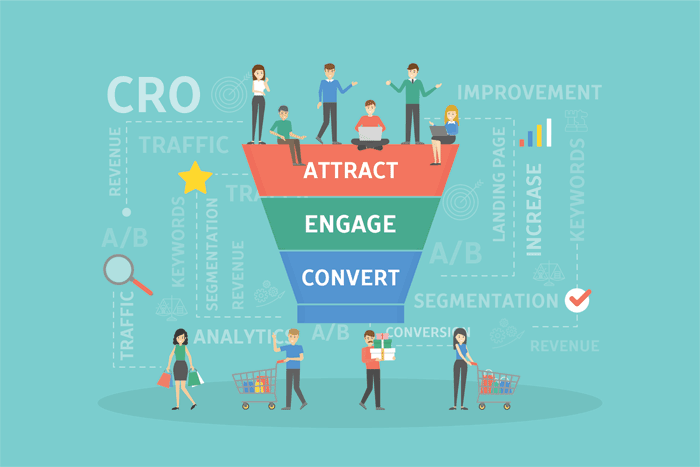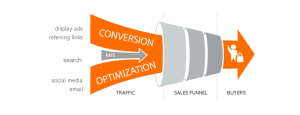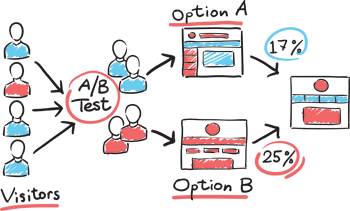|
Audio
|

Whats is Conversion Rate Optimization?
What Is Conversion Rate Optimization?
Any user who visits your website or app and completes the “end goal” – purchases something from your online store, fills in your contact form, or the like – is a conversion. While there are countless ways to get more users to visit your site, none of them matter if your users aren’t converting.
Conversion rate optimization (CRO) works to increase the number of users that convert, getting you more value from the visitors you already have. By increasing the revenue per visitor, you’re decreasing your cost per acquisition, which will ultimately allow you to attract more customers and grow your business.
How Does Conversion Rate Optimization Work?
Imagine that your landing page received 5,000 visitors per month, and 500 of them convert. That would make your conversion rate 10%. CRO works to optimize different elements on your page (and throughout your website) to increase the number of people that convert, to drive that percentage up.
CRO generally works using experimental processes – trial and error. A CRO professional will work with you to come up with ideas to improve certain elements on your site and then will put those ideas to the test using A/B and multivariate testing.
The best companies are constantly testing and improving their apps and sites to create an optimal experience for their users and improve conversion rates. There is practically an infinite number of improvements that you could make on any website, so you’ll need to establish your conversion metrics and set specific goals before determining the best CRO strategy for your business at any given time.
Establishing Metrics
Conversion rate optimization starts with knowing what your conversion goals are. These success metrics depend heavily on what type of business you run. For instance, if you run an online shop, then a conversion for you probably means a user makes a purchase, however, you might also measure conversions based on how many users add a specific item to their shopping cart, or how many enter in contact with your company.
Service-based businesses might measure conversions based on the number of leads your site produces, or on the number of informative downloads, while a media company might count newsletter subscriptions or pageviews as conversions.
How to Optimize
Once you know what your conversion metrics are, the next step is to identify areas in which you can improve your “conversion funnel” – or the process through which you get conversions via your site or app – to increase the total number of conversions achieved.
Begin by focusing on the part of your website that receives the most amount of traffic, or that historically has generated the largest number of conversions. These are the pages where you’ll generally see better results quicker, making them higher value areas to focus on.
Alternatively, if your site is already high performing, you might want to focus your CRO efforts on any areas of your website that are underperforming in comparison – such as a page that receives a relatively high amount of traffic, but a relatively low number of conversions. Here you’ll find the greatest room for improvement.
How to start Conversion Rate Optimization

CRO works the same way. After determining which pages to optimize, you need to come up with optimization ideas and begin A/B testing. For example, if you think one photo, or one headline, will drive more clicks over another, then put your idea to the test.
If you’re at a loss, consider working with a CRO professional to get your website up to par, and improve the number of conversions – and thus the success of your business – quickly and easily.

